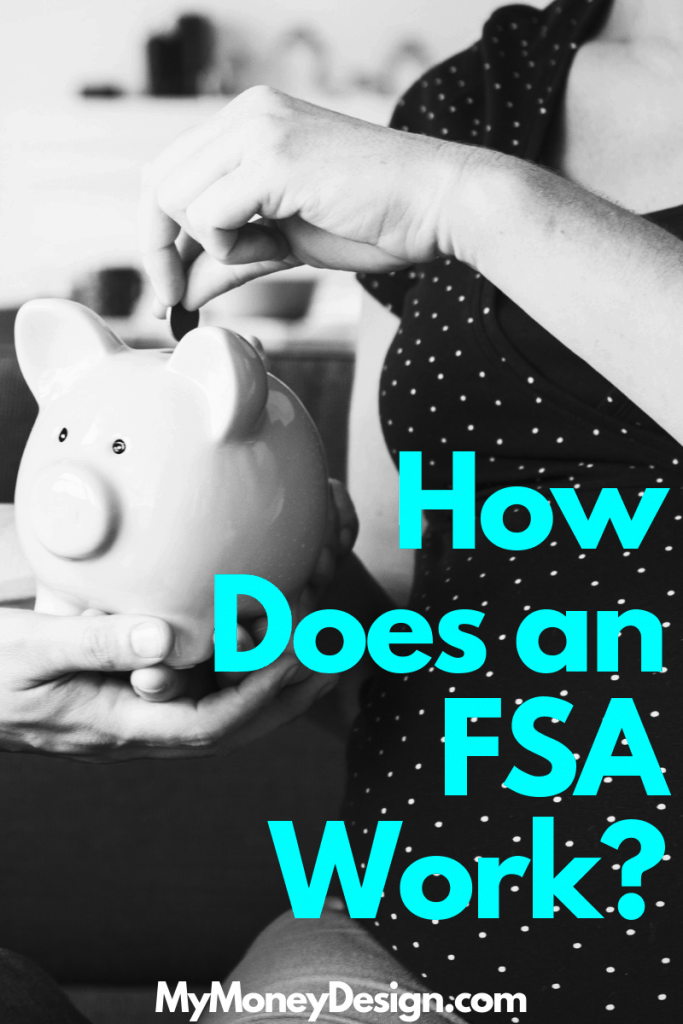Do you know about flexible spending accounts (FSA’s)? You may have heard of them from your HR department and wondered: “How would this benefit me?” or “How does an FSA work exactly?”
Believe me – These were the same types of questions my wife and I had when we were first getting started in our jobs years ago and looking for every angle we could to save a little bit of cash.
At first glance, an FSA seems like just another thing taking money out of your paycheck. For most of us, that’s a deal-breaker. Between taxes, social security, and our retirement contributions, there’s already enough being subtracted from how much we really earn. Do you really need something else to reduce it even further?
… Yes! And I’ll tell you exactly why. A flexible spending account can be a powerful friend to you and your money when it comes to tackling two of the biggest expenses that families deal with: Medical and dependent care (i.e. daycare) costs.
Similar to your retirement accounts, the major advantage of an FSA is that it allows you to set aside money from your paycheck before taxes are taken out. (More on this below.)
Though it may not seem like at first, this is a HUGE advantage for working families that can end up saving them thousands of extra dollars each year!
Sounds good, right? So how do you sign up for one?
Before we see the details of how a flexible spending accounts work, let’s first explain what they are.
What Is a Flexible Spending Account?
Known by the IRS as “flexible spending arrangements”, an FSA is a special financial account that you contribute to and (at the same time) use to reimburse yourself for medical and dependent care expenses using tax-free money.
Similar to your retirement accounts such as a 401(k) or IRA, flexible spending accounts are another opportunity given by the IRS to take a tax-break and provide some relief to working families.
As most working-class Americans can tell you, medical and daycare expenses can add up pretty fast! Not only can they put quite a drain on your budget, but they are also often unavoidable. By allowing some tax relief on these two areas, this helps reduce the financial strain by creating a savings opportunity that could result in thousands!
Is an FSA and an HSA the Same Thing?
No. An HSA is a “health savings account” and is different from a medical flexible spending account. Though both use tax-free money to help cover your medical expenses, HSA’s work differently from FSA’s and also come with different qualifications in order to use them. More on this below.
How Does An FSA Work?
Despite how an FSA may have been explained to you in the past, I can tell you from experience: They’re pretty simple and easy to manage.
Here’s exactly how an FSA works:
- Once per year (through your employer), you agree to participate in an FSA. To do this, you first need to decide on a set amount of money that you’d like to put aside into your FSA. For this example, let’s say you decide to contribute the maximum amount of $5,000 for your children’s daycare and $2,700 for your medical expenses.
- Your FSA is now ready for use. Throughout the year, as you periodically have daycare and medical expenses, you can submit proof to the service provider and then you’ll be reimbursed. I’m able to do this in a matter of seconds using an app on my phone.
- At the same time, throughout the year, money will be taken out of each of your paychecks to contribute to the FSA and effectively fund it. If you’re paid every two weeks and on a 26-paycheck cycle, that means $7,700 / 26 = $296.15 each time.
So in summary, think if it like a special advance payment or bank account that you receive up-front and pay back throughout the year.
Why Tax-Free Money is Awesome!
Wait! You might ask yourself: If I’m just taking money out of an account that I eventually pay back, what’s the point? Why do I even need an FSA?
Because you have to remember: Your contributions to the FSA are tax-free! It’s money that’s coming out of your paycheck before taxes are applied.
Let’s go back to our example for a second. Remember we said you’re setting aside $296.15 every paycheck. What if you didn’t save the money in an FSA? What would happen?
That savings would of course be taxed! If you’re in the 22% tax bracket, then this means you’d really only ever receive about $231 of that $296.15 you earned.
So by contributing to your FSA, you keep the whole $296.15! In our example, you’re effectively saving $65.15 every pay check, or $1,694 over the course of the year.
That’s not too bad of a deal! Especially when you think about how strapped for cash most families are, this tax-savings can really be a huge benefit.
Medical and Dependent Accounts Are Separate
In the example I gave above, I combined the numbers for both medical and dependent care. But please keep in mind: Your FSA provider will treat these as two separate accounts.
This means you can’t submit receipts for medical expenses to make claims against your dependent care FSA, and vice versa.
Also remember that you don’t have to contribute to both in order to participate. For example, if you don’t have any dependents but do have medical expenses, then you can just contribute to the medical FSA only.
The FSA “Use It or Lose It” Rule
If an FSA sounded too good to be true, then you knew there had to be a catch, right?
Well, there is and its often referred to as the “use it or lose it” rule.
What does that mean? It means if you don’t submit enough qualified expenses for the year to get back all of your contributions, then you lose them. For example, if your medical FSA is $2,700 and you only submit $2,000 of expenses for the year, then you forfeit that $700 extra you contributed.
This is why its very important not to over-estimate how much you plan to contribute to your dependent care or medical FSA. You will want to pick a number that is realistic and based on a your known upcoming expenses.
When we would do this, we’d estimate how much we planned on spending for the year in daycare and known medical costs such as braces for the children or number of times we visited the doctor last year. This helped us to calculate a figure that we could easily hit while still maximizing the benefit of the FSA tax savings.
Some plans will allow you a grace period of two months or so after the plan year to use up all of your remaining unspent FSA money. In addition, some plans will also allow you to rollover as much as $500 of unspent contributions into the next plan year. For specifics on your plan, ask your HR department for the details.
How Much Can You Contribute to Your Dependent Care FSA?
For each calendar year, you’re allowed to elect as much as $5,000 to your Dependent Care FSA. That means if you’re in the 22% tax bracket, you could be saving as much as $1,100 in taxes annually.
What constitutes an eligible dependent care expense?
- Putting your children (under the age of 13) that you have to put in day care, after school care, or summer camp so that you and your spouse can work.
- Care for a tax dependent of any age who cannot physically or mentally take care of themselves.
My wife and I used to joke that our children’s daycare bills were our second mortgage. But honestly, it really was! We’d write a check to our daycare provider for nearly just as much as what we paid for our house every month.
Discovering the benefit of an FSA was a nice sense of relief! Saving over $1,000 in taxes was just what we needed when we had our hands full with young children and all the expenses that come along with it.
How Much Can You Contribute to Your Medical FSA?
For each calendar year, you’re allowed to elect as much as $2,700 to your Medical FSA. That means if you’re in the 22% tax bracket, you could be saving as much as $594 in taxes annually.
In general, these are medical expenses that you paid for yourself, your spouse, or any of your tax-dependents (such as your children under age 27).
Truthfully, the range of things which count as a “qualified medical expense” are pretty wide. You can use your FSA for larger medical expenses such as:
- Office co-pays
- Medical procedures
- Prescriptions
- Dental
- Eye exams and glasses
What’s not so well-known is that you can even use your medical FSA for smaller purchases that you probably don’t associate as being a typical medical expense, such as:
- Facial care
- Sun-screen
- Band-aids
- Contact lenses
- Thermometers
- First aid kits
- Baby care and feeding products
- And so many others!
Health-related expenses which are not covered by an FSA include insurance premium, long-term care coverage, and expenses covered by another health plan.
How Do I Sign-Up for an FSA?
FSA’s are an employer-sponsored benefit. Similar to a 401(k), they have to be offered through your place of employment. The best thing to do is to go talk to your local HR department and see if they offer flexible spending accounts. If your spouse works, you could check with their employer too.
Can I Contribute to an HSA Too?
No, according to the IRS, if you contribute to an FSA, then you cannot participate in an HSA (health savings account) also. From the IRS’s perspective, you’d be essentially “double-dipping” in tax benefits.
Health savings accounts are different from FSA’s in that there is no use it or lose it rule. You still contribute tax-free money into the account and reimburse yourself as medical expenses come up. But the money stays that account indefinitely. In fact, the money can be invested and allowed to compound over the years tax free similar to your 401(k) or IRA.
But the catch with an HAS is that in order to qualify for one, you need to have medical insurance with higher than average deductibles. Depending on how often you go to the doctor or anticipate needing medical procedures, this can be a bad trade-off.
Can Both My Spouse and I Have FSA’s?
In general, no. If one spouse or the other has an FSA, then the other one cannot sign-up for one. An example of this would be that both of you could not sign up for the dependent care FSA and try to claim double the maximum amount allowed. Again, that would be double-dipping in tax-benefits.
It is possible, however, for one spouse to sign up for the dependent care FSA while the other signs up for the medical FSA. Because these two types of plans are treated separately, there would be no influence from one plan to the other.
Readers – Who uses FSA’s? How much do you save each year? What strategies do you use to get their maximum value?
Photo credits: Unsplash, Pexels





Leave a Reply